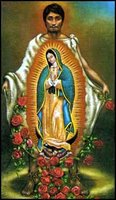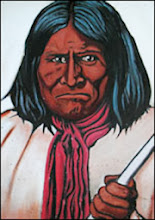
 Sorcerers are persons of knowledge rather than persons of reason. As such, they are a step ahead of Western intellectuals who assume that reality--which is often equated with truth--is knowable through reason. A sorcerer claims that all that is knowable through reason is our thought processes, but that it is only by understanding our total being, at its most sophisticated and intricate level, that can we eventually erase the boundaries with which reason defines reality.
Sorcerers are persons of knowledge rather than persons of reason. As such, they are a step ahead of Western intellectuals who assume that reality--which is often equated with truth--is knowable through reason. A sorcerer claims that all that is knowable through reason is our thought processes, but that it is only by understanding our total being, at its most sophisticated and intricate level, that can we eventually erase the boundaries with which reason defines reality. Sorcerers cultivate the totality of their being. That is, sorcerers don't necessarily make a distinction between our rational and our intuitive sides. They use both to reach the realm of awareness they call silent knowledge, which lies beyond language, beyond thought. For one to silence one's rational side, one first has to understand his or her thought process at its most sophisticated and intricate level.
Philosophy, beginning with classical Greek thought, provided the best way to illuminating this thought process. Whether we are scholars or laypersons, we are nonetheless members and inheritors of our Western intellectual tradition. And that means that regardless of our level of education and sophistication, we are captives of that intellectual tradition and the way it interprets what reality is. Only superficially are we willing to accept that what we call reality is a culturally determined construct. And what we need is to accept at the deepest level possible is that culture is the product of a long, cooperative, highly selective, highly developed, and, last but not least, highly coercive process that culminates in an agreement that shields us from other possibilties.
Sorcerers actively strive to unmask the fact that reality is dictated and upheld by reason; that ideas and thoughts stemming from reason become regimes of knowledge that ordain how we see and act in the world; and that incredible pressure is put on all of us to make certain ideologies acceptable to ourselves. Sorcerers are interested in perceiving the world in ways outside of what is culturally determined. What is culturally determined is that our personal experiences, plus a shared social agreement on what our senses are capable of perceiving, dictate what we perceive. Anything out of this sensorially agreed-upon perceptual realm is automatically encapsulated and disregarded by the rational mind. In this manner, the frail blanket of human assumptions is never damaged.
Sorcerers teach that perception takes place in a place outside the sensorial realm. Sorcerers know that something more vast exists than what we have agreed upon our senses can perceive. Perception takes place at a point outside the body, outside the senses, they say. But it isn't enough for one merely to believe this premise. It is not simply a matter of reading or hearing about it from someone else. In order for one to embody it, one has to experience it. Sorcerers actively strive, all their lives, to break that frail blanket of human assumptions. However, sorcerers don't plunge into the darkness blindly. They are prepared. They know that whenever they leap into the unknown, they need to have a well-developed rational side. Only then with they be able to explain and make sense of whatever they might bring forth from their journeys into the unknown.
One isn't to understand sorcery through reading the works of philosophers. Rather, one is to see that both philosophy and sorcery are highly sophisticated forms of abstract knowledge. Both for sorcerer and philosopher, the truth of our Being-in-the-world does not remain unthought. A sorcerer, however, goes a step further. He acts upon his findings, which are already, by definition, outside our culturally accepted possibilities. Philosphers are intellectual sorcerers. However, their probings and their pursuits always remain mental endeavors.
Philosophers cannot act upon the world they understand and explain so well except in the culturally agreed-upon manner. Philosophers add to an already existing body of knowledge. They interpret and reinterpret existing philosophical texts. New thoughts and ideas resulting from this intense studying don't change them, except perhaps in a psychological sense. They might become kinder, more understanding people--or, perhaps, the opposite. However, nothing of what they do philosophically will change their sensorial perception of the world, for philosophers work from within the social order. They uphold the social order even if intellectually they don't agree with it. Philosophers are sorcerers manqué.
Sorcerers also build upon an existing body of knowledge. However, they don't build upon this knowledge by accepting what has already been established and proven by other sorcerers. Sorcerers have to prove to themselves anew that that which already stands as accepted does indeed exist, does indeed yield to perceiving. To accomplish this monumental task, sorcerers need an extraordinary amount of energy, which they obtain by detaching themselves from the social order without retreating from the world. Sorcerers break the agreement that has defined reality, without breaking up in the process themselves. ______________________________________________________________________
Excerpted and paraphrased from "BEING-IN-DREAMING: An initiation into the Sorcerer's World" by Florinda Donner. HarperCollins Publishers, 1991.





